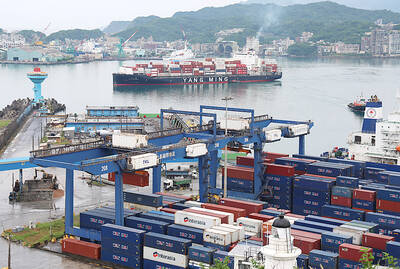Australia’s latest floods disaster will have a minimal economic impact nationally despite some damage to rail lines, mines and crops in certain areas, Australian Treasurer Wayne Swan said yesterday.
In recent weeks record floods have swamped large areas of New South Wales and Queensland, prompting fears of a repeat of last year’s floods, which put a significant dent in Australia’s GDP for the financial year to June last year.
“Despite the terrible impact on affected communities, we’re not expecting the flooding to have a significant impact on the national economy at this stage,” Swan wrote in a regular economic note.
“While the heavy rainfall has resulted in the temporary closure of several rail lines and caused disruption to some coal mines, it hasn’t caused any significant disruptions to major coal mining operations in the Bowen Basin or the Hunter Valley,” he wrote. “And while some crops are likely to be affected by the damage to farm land, Treasury advises the impact on the supply and prices of fresh produce is not expected to be great.”
Swan said Australia’s economy continued to do well, forecasting output in the key resources sector would increase by about 77 percent by 2020.
The floods forced thousands of people from their homes and killed one person.
On Saturday, Australian Prime Minister Julia Gillard toured the flood-hit town of St George in Queensland, where she said A$1.9 billion (US$2 billion) of funding had been released to the state government in recent days to help it combat the latest disaster.
However, Swan said Australia’s economy, buoyed by demand from China for iron ore and coal, is feeling the impact of a global slowdown as employers defer hiring new workers on European uncertainty.
While Australia can still expect “solid growth,” the global environment and gains in the nation’s currency will affect non-mining sectors such as manufacturing, he said.
“We shouldn’t pretend that there’s a simple solution,” Swan said. “The affected businesses will need to do more to adapt, to improve their efficiency, to spot new opportunities, to find new markets and to design new products.”
The Reserve Bank of Australia sees average growth of 3.5 percent this year, down from last year’s Nov. 4 estimate of 4 percent. Consumer prices will rise 3 percent in the year through to the fourth quarter, less than a previous prediction of 3.25 percent, the central bank said on Friday.

CHIP RACE: Three years of overbroad export controls drove foreign competitors to pursue their own AI chips, and ‘cost US taxpayers billions of dollars,’ Nvidia said China has figured out the US strategy for allowing it to buy Nvidia Corp’s H200s and is rejecting the artificial intelligence (AI) chip in favor of domestically developed semiconductors, White House AI adviser David Sacks said, citing news reports. US President Donald Trump on Monday said that he would allow shipments of Nvidia’s H200 chips to China, part of an administration effort backed by Sacks to challenge Chinese tech champions such as Huawei Technologies Co (華為) by bringing US competition to their home market. On Friday, Sacks signaled that he was uncertain about whether that approach would work. “They’re rejecting our chips,” Sacks

Taiwan’s exports soared 56 percent year-on-year to an all-time high of US$64.05 billion last month, propelled by surging global demand for artificial intelligence (AI), high-performance computing and cloud service infrastructure, the Ministry of Finance said yesterday. Department of Statistics Director-General Beatrice Tsai (蔡美娜) called the figure an unexpected upside surprise, citing a wave of technology orders from overseas customers alongside the usual year-end shopping season for technology products. Growth is likely to remain strong this month, she said, projecting a 40 percent to 45 percent expansion on an annual basis. The outperformance could prompt the Directorate-General of Budget, Accounting and

NATIONAL SECURITY: Intel’s testing of ACM tools despite US government control ‘highlights egregious gaps in US technology protection policies,’ a former official said Chipmaker Intel Corp has tested chipmaking tools this year from a toolmaker with deep roots in China and two overseas units that were targeted by US sanctions, according to two sources with direct knowledge of the matter. Intel, which fended off calls for its CEO’s resignation from US President Donald Trump in August over his alleged ties to China, got the tools from ACM Research Inc, a Fremont, California-based producer of chipmaking equipment. Two of ACM’s units, based in Shanghai and South Korea, were among a number of firms barred last year from receiving US technology over claims they have

BARRIERS: Gudeng’s chairman said it was unlikely that the US could replicate Taiwan’s science parks in Arizona, given its strict immigration policies and cultural differences Gudeng Precision Industrial Co (家登), which supplies wafer pods to the world’s major semiconductor firms, yesterday said it is in no rush to set up production in the US due to high costs. The company supplies its customers through a warehouse in Arizona jointly operated by TSS Holdings Ltd (德鑫控股), a joint holding of Gudeng and 17 Taiwanese firms in the semiconductor supply chain, including specialty plastic compounds producer Nytex Composites Co (耐特) and automated material handling system supplier Symtek Automation Asia Co (迅得). While the company has long been exploring the feasibility of setting up production in the US to address